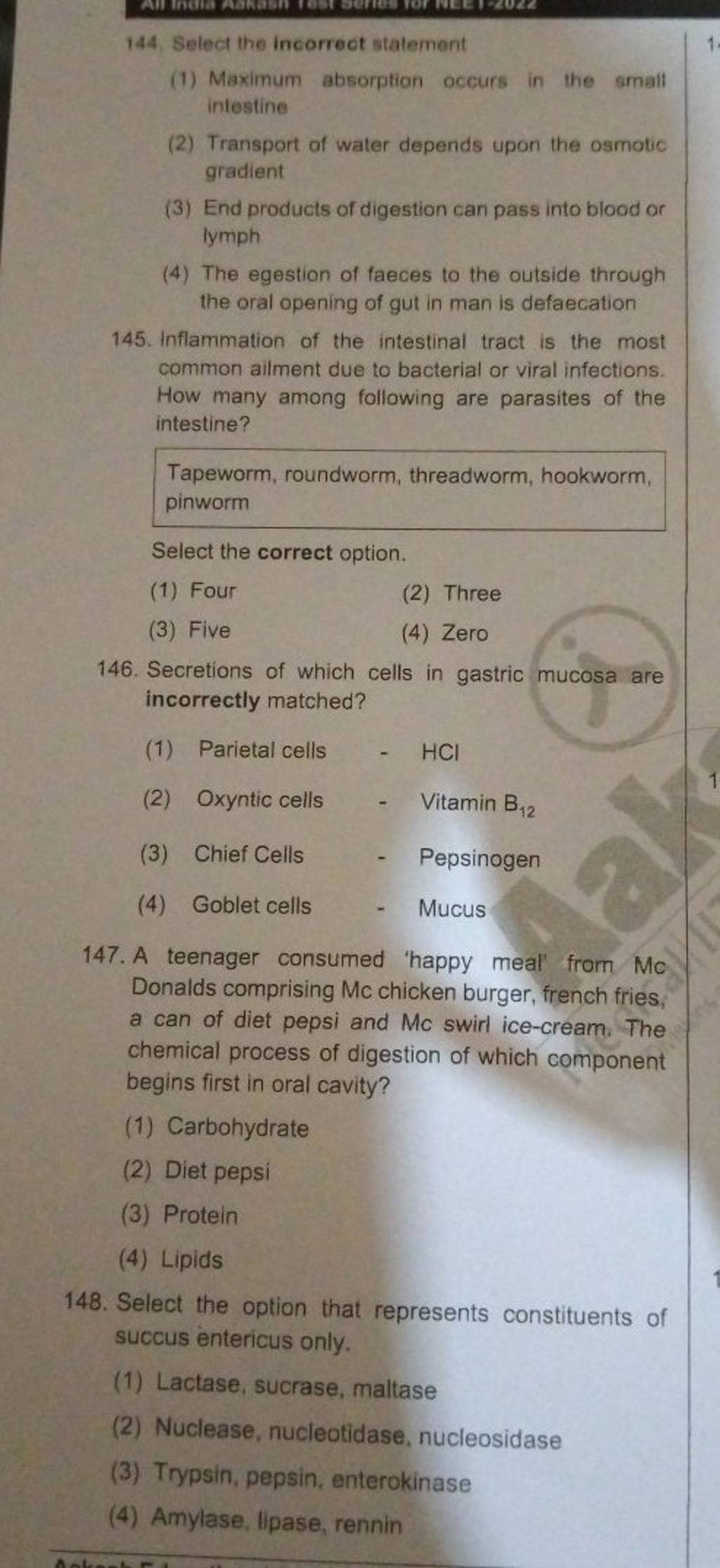Question
Question asked by Filo student

Select the option that represents constituents of succus entericus only.
- Lactase, sucrase, maltase
- Nuclease, nucleotidase, nucleosidase
- Trypsin, pepsin, enterokinase
- Amylase, lipase, rennin
Found 5 tutors discussing this question
Discuss this question LIVE
15 mins ago

One destination to cover all your homework and assignment needs
Learn Practice Revision Succeed

Instant 1:1 help, 24x7
60, 000+ Expert tutors

Textbook solutions
Big idea maths, McGraw-Hill Education etc

Essay review
Get expert feedback on your essay

Schedule classes
High dosage tutoring from Dedicated 3 experts
Practice more questions on Human Physiology
View moreStudents who ask this question also asked
Question 1
Views: 5,816
Question 3
Views: 5,911


Stuck on the question or explanation?
Connect with our Biology tutors online and get step by step solution of this question.
231 students are taking LIVE classes
| Question Text | Select the option that represents constituents of succus entericus only. |
| Updated On | Dec 17, 2022 |
| Topic | Human Physiology |
| Subject | Biology |
| Class | Class 11 |
| Answer Type | Video solution: 1 |
| Upvotes | 75 |
| Avg. Video Duration | 23 min |



